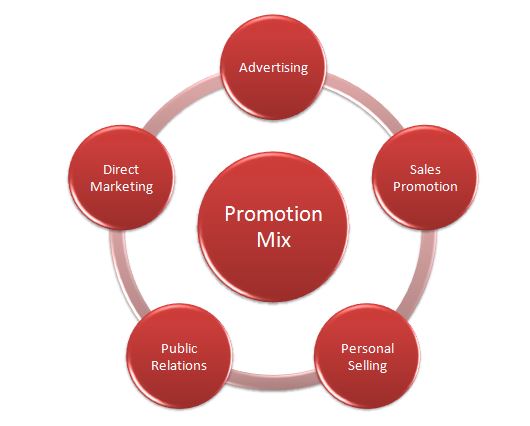The promotion mix or marketing communication mix refers to the five tools a company can use to efficiently communicate with its customers, create value, and build strong relationships. Those five tools are: advertising, public relations (PR), personal selling, sales promotion, and direct-marketing.
It would be quite complicated for a company, even the biggest ones, to use all of those five ways of communication at the same time. Any marketing department in any company has to make choices. During my work on Red Bull (see Sources), I studied the company’s promotion mix and discovered that the leader of the energy drinks market uses three of those tools.
Red Bull uses public relations, advertising, and sales promotions among the promotional mix elements. If I had to explain how I perceive Red Bull’s way to promote its brand, I would say that I notice the brand first through its sports events and its athletes sponsorship (both PR elements) rather than its traditional TV commercials and printed ads promoting the product itself.
Red Bull mainly focuses on public relations. The company mainly communicates by sponsoring or creating special events such as Felix Baumgartner’s space jump or extreme sports contests. Red Bull then uses its YouTube channel to broadcast videos from the athletes. The Red Bull logo mainly appears on athletes’ outfits and on banners during those events. Those events create a company personality way over the product itself. Red Bull is building a brand identity rather than describing the value of the product.
As every big company, Red Bull allocates a part of its communication budget to traditional advertising such as TV commercials and printed ads. The TV commercials do not relate athletes performances, but show funny cartoons and focus on the slogan “Red Bull gives you Wiiings”. Those commercials are mainly reminders and are not the main way the company uses to communicate with its customers.
The third step of Red Bull’s promotion goes through sales promotion. Red Bull rarely offers discounts on its products but gives away free cans in special areas where its main target audience is. Those free cans first remind customers to buy the product but also bring new customers who had never tried it before.
I think the company’s marketing strategy is more than coherent and each element of its promotional mix matches the message other elements provide. That is why Red Bull stays as the leader on the market for energy drinks, despite the total lack of actual product differentiation, as the Red Bull’s recipe is not recognized as more effective than its competitors’.

